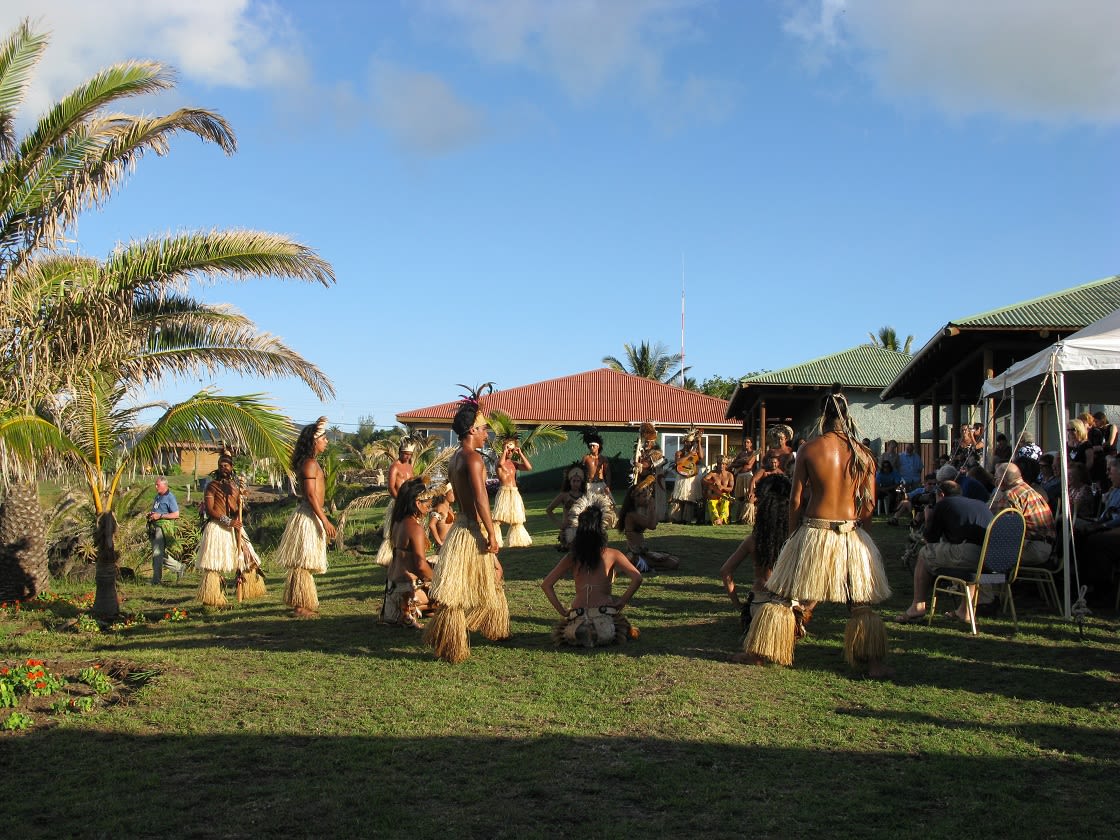
One of the world’s most enigmatic and intriguing places, Easter Island or Rapa Nui covers approximately 64 square miles in the South Pacific Ocean and is located some 2,300 miles from Chile’s west coast and 2,500 miles east of Tahiti. Traveling to Easter Island is a dream for many people and may only be realized once in a lifetime, due to the remoteness and the price of getting to this isolated and fascinating destination. On that basis, you want to be sure to choose the best time of year to visit Easter Island. Read on to learn about the climate, annual events, tourist seasons, and potential travel costs.
The temperatures are fairly mild on Easter Island year-round, but rain and strong winds can make the air feel much colder than it really is during the Southern hemisphere winter months of July and August. Expect temperatures to run from the upper 50s F to low 70s F in winter and the low- to mid-80s F in summer.
January and February are the traditional months of vacations here, and the peak travel and tourist season run throughout the summer from December to February on Easter Island, therefore during this time prices are quite expensive. This is also the hottest time of year, running a humid 85° F much of the time. If your ideal Easter Island getaway plans include spending time in the sunshine to escape from the winter season in the Northern hemisphere, this is an ideal time to visit.
However, you should note that hotels can increase their rates by around 30 percent when there is a high demand for accommodations, and plane tickets from Santiago de Chile, or Papeete in Tahiti, can be tripled. Hotel rooms can be scarce in January and February, so if you’re planning to visit during this time, book well in advance.

Easter Island People
Early February is also a popular time to visit for the island’s week-long cultural celebration, the Tapati Rapa Nui festival. This is one of the most important cultural festivals in all of Polynesia, where the population of the island is divided into two clans, who compete for the title of king and queen of the island. Ancient games like ‘haka pei’, sliding down a cliff on a banana tree log, rowing across the river on a reed tortora raft, and balancing a bushel of bananas over your shoulder are highlights.

Varua Room At Explora Rapa Nui
If you want to attend this event, it is advisable to book your Easter Island hotel and your flight ticket several months in advance, in order to get reservations at reasonable prices. For a few weeks at the end of January, hotels are so booked that local residents actually have to rent out their houses to accommodate all guests. Another point to note is that between December 21 and March 21, the sun rises behind the fifteen moai at Ahu Tongariki, the largest ceremonial platform on Easter Island. The statues are silhouetted against a backdrop of changing colors, offering a mystical and impressive spectacle and a fabulous photo opportunity.
March to April (fall) and October to November (spring) are the shoulder seasons here. Since this is not the peak tourist season, hotel rates are more reasonable and less likely to be overbooked, so this could be the best time to visit Easter Island. The weather is also comfortable for hiking and visiting historical sites, so if you’re traveling to visit the moai, the large, carved stone figures guarding the landscape, the off-season or non-summer months may be more preferable in terms of climate and hotel prices. The Rapa Nui Pro Surf Championship, which is an integrated competition in the Chilean national surf circuit, is usually held in October, providing an excellent opportunity to watch the maneuvers of Chile’s best surfers on the waves of Hanga Roa.
The low season starts after Easter, in the month of April, and extends until the end of November. If visiting in April through August, plan on getting wet, and pack accordingly. The island experiences heavy rain and thunderstorms at this time of year. The rainiest months are usually those of April and May, where it can rain several days in a row.
During the austral winter, from June to September, temperatures are cooler, averaging about 64° F, and on wet and blustery days, when the wind is blowing off the Antarctic ocean it can feel considerably colder, especially at high points such as the Rano Kau volcano crater or the top of the Terevaka. In low season prices are cheaper, and you can find very good offers on flights if you reserve in advance. The influx of tourists decreases considerably so there will be no problems finding accommodation, but it is likely that some tourist services may be less frequent or unavailable.
At the end of April, the Arts and Culture Week, organized by the Tongariki Cultural Center, is held showcasing exhibitions of local products, handicraft workshops, and musical performances along with other activities. Held every year in May/June, the Easter Island Marathon, half marathon, and 10 K are some of the most exclusive running events in the world. Only accepting 150 participants, about 50 of those are locals. A fairly flat track, the race begins in the center of Hanga Roa, the main town, continues on to the center of the island, and then circles back to Anakena Beach.
Each year on June 29th, Easter Island celebrates the feast of St. Peter and St. Paul. After prayers and blessings, a traditional curanto feast is provided for the whole community. A hole in the ground is filled with firewood and red-hot stones, which are covered with banana leaves on which meat, chicken, and fish are placed and covered again with leaves and stones. A second layer is placed on top with tubers such as sweet potato, taro, and cassava and covered again with banana leaves and earth. The heat cooks the food in a slow and long process that turns the curanto into a communal meal.
While Rainforest Cruises aim to provide accurate and up-to-date information, we make no representations as to the accuracy or completeness of any information herein or found by following any link on this site. Rainforest Cruises cannot and will not accept responsibility for any omissions or inaccuracies, or for any consequences arising therefrom, including any losses, injuries, or damages resulting from the display or use of this information.




